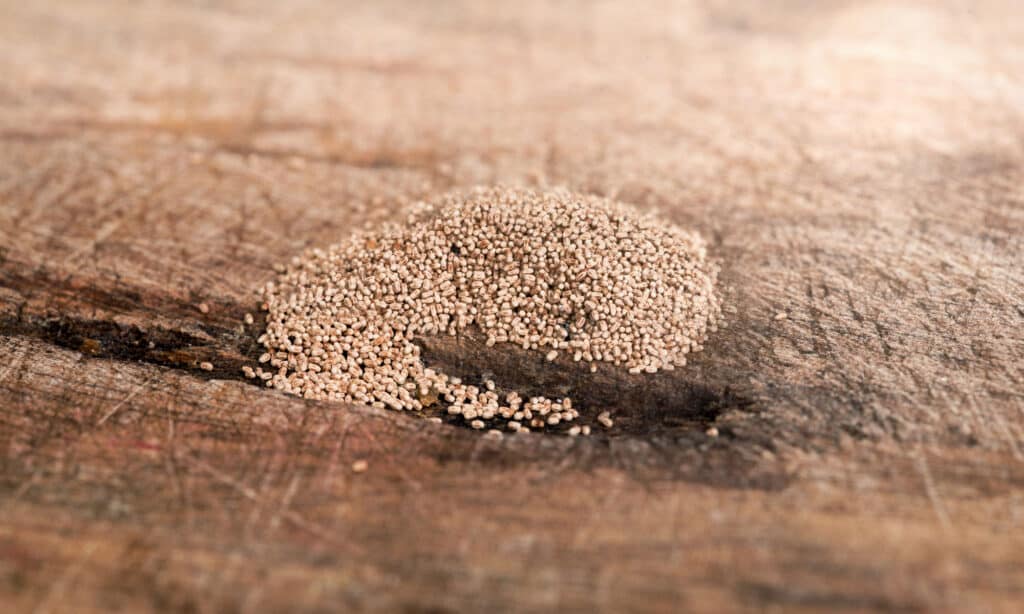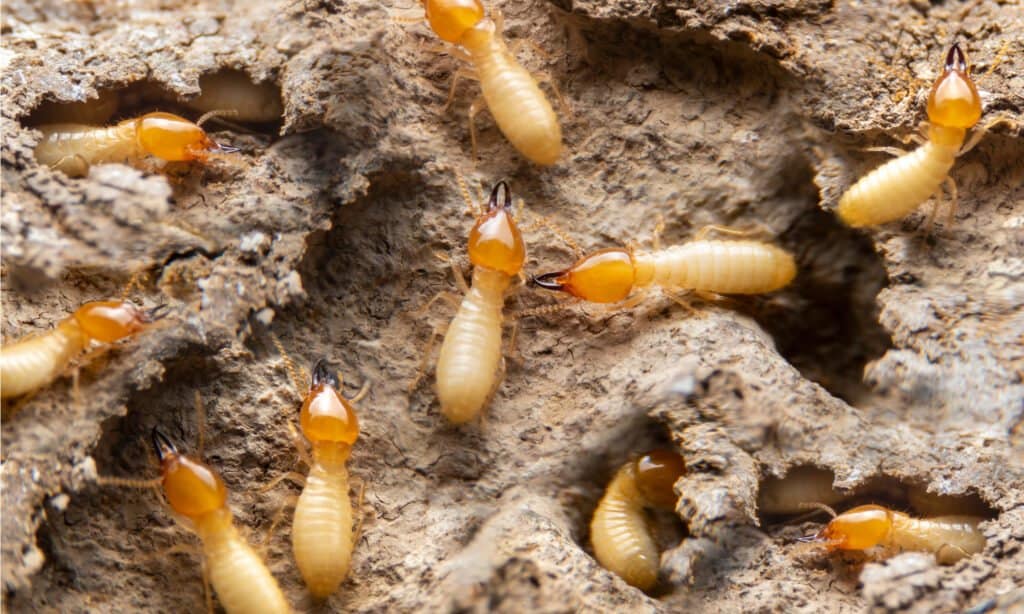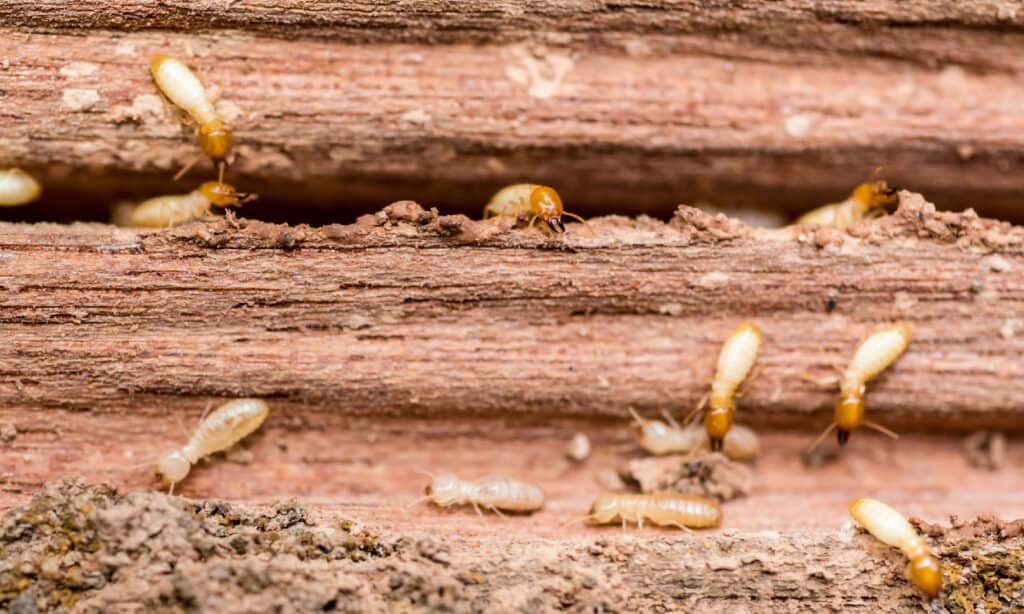Termites are tiny insects that belong to the same family as cockroaches. However, most people would rather have the latter’s infestation. Often described as silent destroyers, termites are known to cause $5 billion in annual property damage. These little pests consume a lot of wood in their diet, and they frequently ruin wood structures with their feeding, which is quite detrimental to dwellings. Hence, they can wreck your home if you give them a good chance.
Termites can be cunning, and they dislike being noticed. Instead of consuming wood from outside, they burrow within it to avoid detection. It can be difficult to diagnose a termite infestation without actually seeing the pesky creatures. They don’t leave any “snail trail” behind, and most of the harm they cause is hidden inside walls or beneath the floor, out of sight. However, one telltale sign could save our homes from destruction: termite poop. But, what does it look like? And does it smell? This article will explore everything you’ve ever wanted to know about termite poop, its dangers, and other interesting facts.
What Does Termite Poop Look Like?

Termite feces are very small, measuring only 0.04 inches long.
©acarapi/Shutterstock.com
Before we begin, termite poop is also called “frass.” If you hear the term – and you will – be aware that frass is just a fancy term for the termites’ droppings. The species of termite infesting your property will determine how termite poop looks. Subterranean and drywood termite species are often encountered as household pests.
Generally, termite feces are very small, measuring only 0.04 inches long. Depending on the type of wood the termites eat, they range in color from tan to brown. Termite poo also comes in oval-shaped pellets with elongated round ends and six flattened surfaces separated by ridges. It typically takes the form of tiny mounds that resemble sawdust or dirt.
How to Distinguish the Frass of Various Termite Species
Drywood Termites
Pellet clumps in your home are a sign of a drywood termite infestation. Since they only leave a few traces, drywood termites are tough to locate. They burrow a wooden structure for their nest, seal the door, and never leave. Only swarmers are allowed to wander to start new termite colonies.
Drywood termites find that wood offers the best conditions for survival, including abundant food and a pleasant atmosphere. Unlimited space is the only issue. Hence, drywood termites pierce the wood to kick their droppings out.
Poop from drywood termites is small and oval-shaped, and it is deposited in mounds that resemble little piles of crushed pepper and is roughly a millimeter long. Depending on the type of wood the termites consumed, the color of the drywood termite excrement may vary.
Subterranean Termites
The feces of subterranean termites are not readily visible. Contrary to drywood termites, they produce more liquid frass, which they combine with saliva and other debris to create mud tubes. As a result, it becomes difficult to tell their poop from their nest. Subterranean termites use tunnel construction as a method of transportation and self-defense against predators and dry air. Look for mud tunnels that resemble worms that climb the foundation or a wall.
Does Termite Poop Smell?

Termite frass doesn’t give off an awful smell.
©Witsawat.S/Shutterstock.com
Unlike other animal feces, termite frass doesn’t give off an awful smell. But the smell of mold and mildew often permeates their poop. Infestations are often initially mistaken for water damage because wide varieties of termites reside underground in mud tubes or in damp wood, where they have a tendency to smell like moisture. It might be a good idea to check for termites if your house has a musty odor but no visible mold or leaks.
Do Termites Fart?
Sheep, cows, and even deer do it in the process of digestion. Termites also engage in it, so yes, they do fart. Termites have microorganisms in their intestines that break down plant matter, just like cattle and other ruminants. Methane is one of the byproducts of this breakdown. Termites are responsible for one to three percent of all methane emissions worldwide. Even though it may seem insignificant, that’s up to 20 million tonnes of methane annually from these modest insects’ rear ends. Termites, however, have a built-in filter system in their nests, unlike humans, to remove this greenhouse gas before it is released into the wider atmosphere.
Is Termite Poop Harmful?
In contrast to other animal feces, such as that of dogs, cats, and rats, which is proven to cause danger to humans, termite frass is not particularly harmful. Although these insects don’t necessarily pose a risk, they can signal potential danger. When removing the frass of termites, wearing gloves and a face mask is recommended because it is possible to breathe in viruses from them.
Additionally, a termite infestation is indicated by the presence of termite frass anywhere in your home, necessitating the immediate identification and extermination of the insects. When this is not done, expensive property damage usually results.
What Do Termites Eat?

Regarded as detritivores, termites eat material classified as detritus.
©iStock.com/viiwee
Termites consume wood, roots, fungi, and dead or decaying plants. They are regarded as detritivores or creatures that eat material classified as detritus. These insects seek food with cellulose in particular. Because of the special bacteria in their gut, they can digest cellulose and use it as energy. But the bacteria in termites’ digestive systems are not acquired spontaneously; they consume one another’s feces to obtain it.
Termites are always awake. Every day of the insects’ lives, they are at work for the entire day. They build their nests, eat, and ensure the safety and happiness of their queen during this time. The bugs can consume a lot of wood since they never stop feeding, which can cause significant harm to a person’s home if they reside there. In fact, Formosan termites have been observed to consume up to 1,000 pounds of wood in a year. The insects can consume enough wood to fill an entire football field. Additionally, termite workers travel up to 250 feet from their nests in search of food.
The photo featured at the top of this post is © PK289/Shutterstock.com
Thank you for reading! Have some feedback for us? Contact the AZ Animals editorial team.






